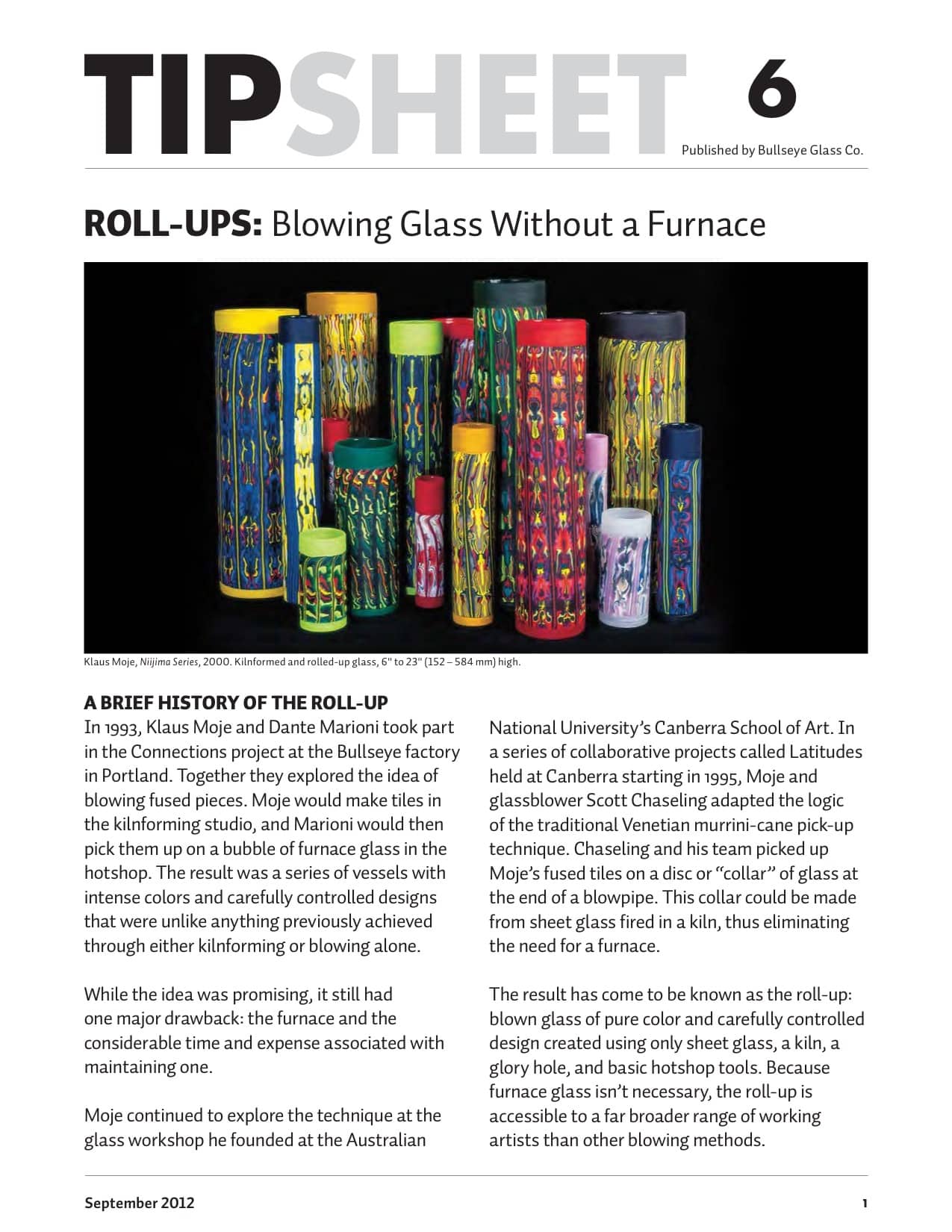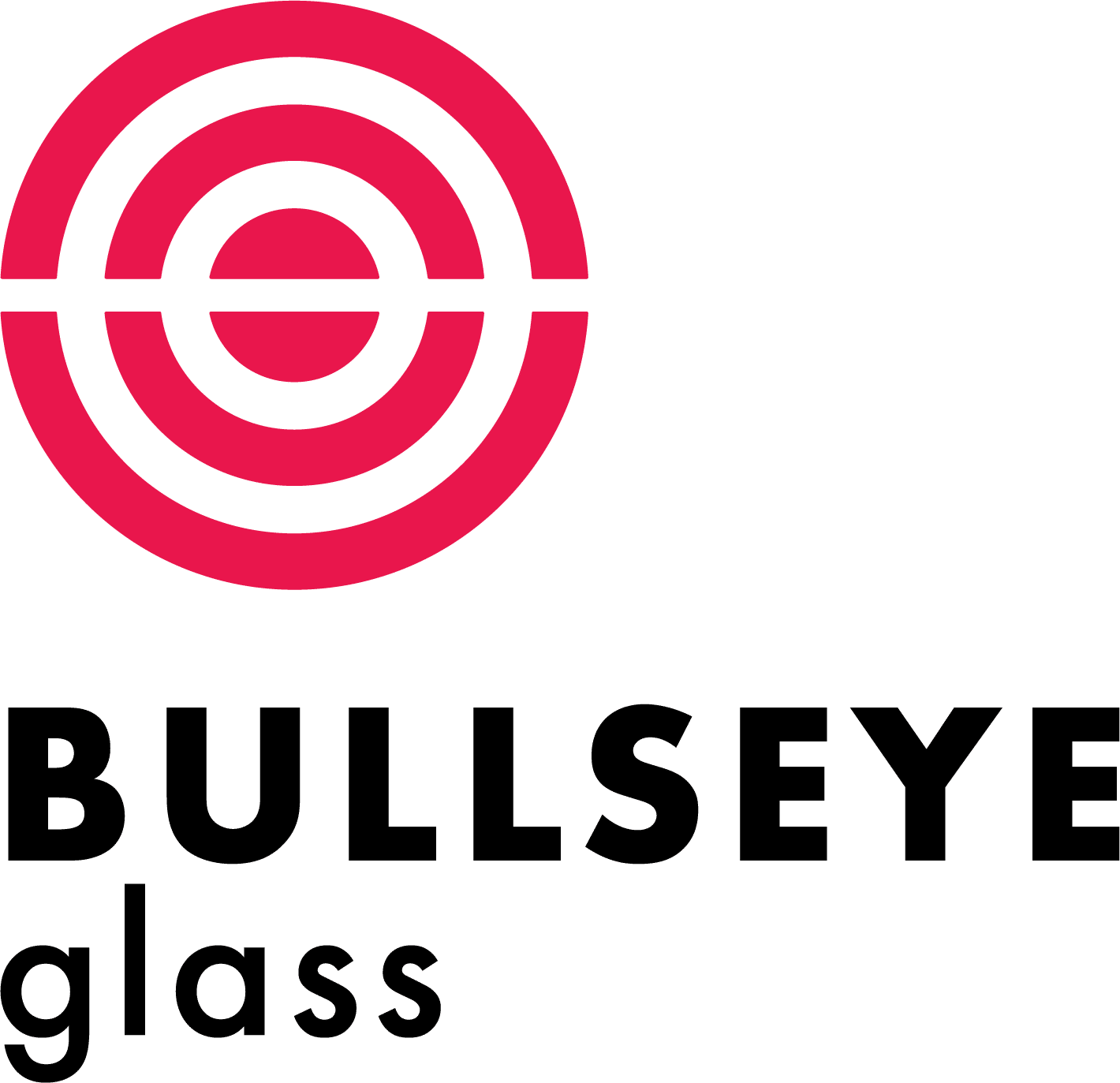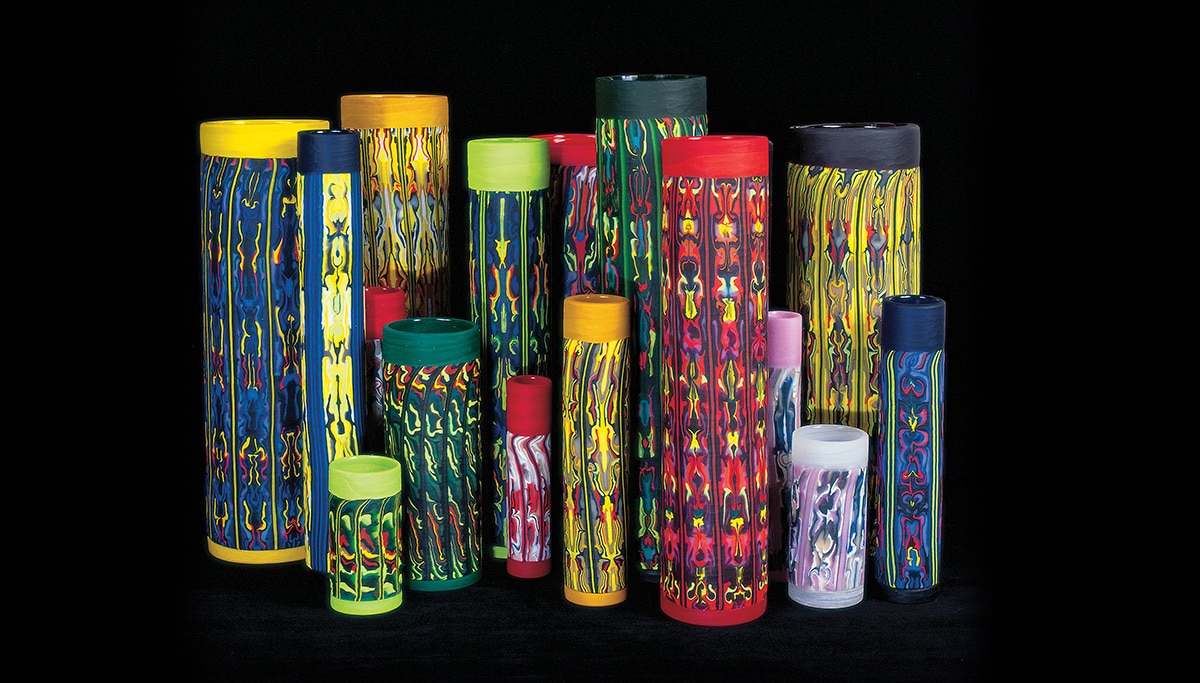A Brief History of the Roll-Up
In 1993, Klaus Moje and Dante Marioni took part in the Connections project at the Bullseye factory in Portland. Together they explored the idea of blowing fused pieces. Moje would make tiles in the kilnforming studio, and Marioni would then pick them up on a bubble of furnace glass in the hotshop. The result was a series of vessels with intense colors and carefully controlled designs that were unlike anything previously achieved through either kilnforming or blowing alone.
While the idea was promising, it still had one major drawback: the furnace and the considerable time and expense associated with maintaining one. Moje continued to explore the technique at the glass workshop he founded at the Australian National University’s Canberra School of Art.
In a series of collaborative projects called Latitudes held at Canberra starting in 1995, Moje and glassblower Scott Chaseling adapted the logic of the traditional Venetian murrini-cane pick-up technique. Chaseling and his team picked up Moje’s fused tiles on a disc or “collar” of glass at the end of a blowpipe. This collar could be made from sheet glass fired in a kiln, thus eliminating the need for a furnace.
The result has come to be known as the roll-up: blown glass of pure color and carefully controlled design created using only sheet glass, a kiln, a glory hole, and basic hotshop tools. Because furnace glass isn’t necessary, the roll-up is accessible to a far broader range of working artists than other blowing methods.


